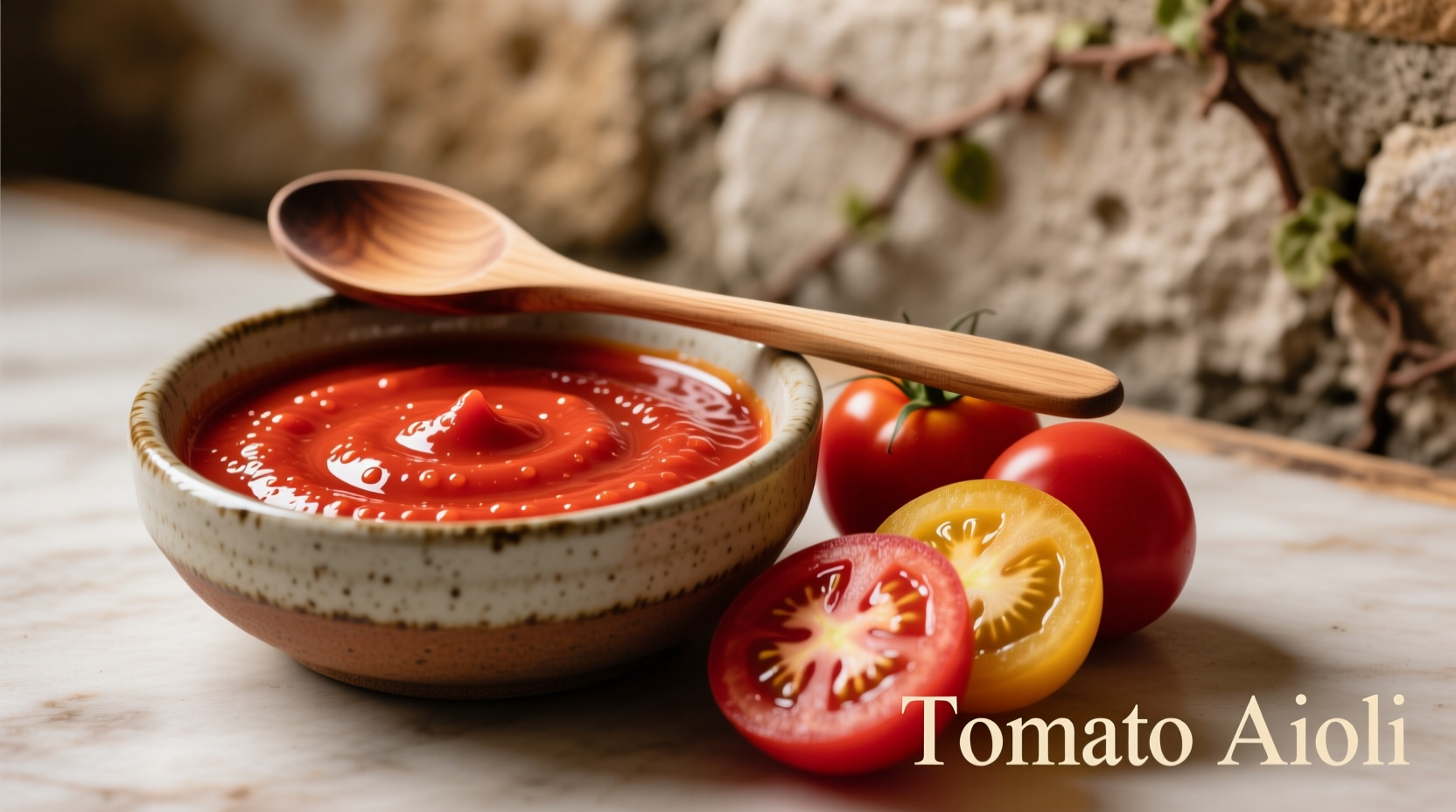The Evolution of Tomato Aioli: From Traditional Roots to Modern Kitchen Staple
While traditional aioli originated in Mediterranean coastal regions like Provence and Catalonia centuries ago, the tomato variation emerged more recently as New World ingredients integrated into European cuisine. Historical food records from the Encyclopædia Britannica show that tomatoes didn't appear in Mediterranean cooking until the 16th century after their introduction from the Americas. The fusion of these ingredients created what food historians now recognize as a "culinary adaptation point" where Old and New World flavors merged.
| Traditional Aioli | Tomato Aioli | Best Application |
|---|---|---|
| Garlic, olive oil, egg yolk | Garlic, olive oil, egg yolk, tomato paste/roasted tomatoes | Seafood dishes, vegetable platters |
| White, opaque appearance | Bright orange-red hue | Colorful presentations, summer menus |
| Strong garlic-forward profile | Complex balance of garlic and tomato acidity | Dishes needing both richness and brightness |
Creating Authentic Tomato Aioli: Step-by-Step Guide
Professional chefs at the Culinary Institute of America emphasize that successful emulsion depends on ingredient temperature and gradual oil incorporation. Start with these precise measurements for consistent results:
- 2 large egg yolks (room temperature)
- 3 cloves garlic, finely minced
- 1 cup high-quality extra virgin olive oil
- 2 tablespoons tomato paste or 1/4 cup roasted tomatoes
- 1 teaspoon lemon juice
- 1/4 teaspoon sea salt
Follow this chef-recommended technique: Combine egg yolks, garlic, and salt in a marble mortar. Gradually whisk in olive oil drop by drop until emulsified. Stir in tomato paste and lemon juice. For roasted tomato variation, blend 1/4 cup roasted tomatoes until smooth before incorporating.

When Tomato Aioli Works Best (And When to Choose Alternatives)
Understanding context boundaries prevents culinary disappointment. Food science research from University of Minnesota Extension confirms that tomato aioli's acidity makes it ideal for:
- Complementing fatty fish like salmon (the acidity cuts through richness)
- Enhancing grilled vegetable platters (especially zucchini and eggplant)
- Adding moisture to dry sandwiches without overwhelming flavors
However, avoid using tomato aioli with:
- Delicate white fish (the color and strong flavor dominate)
- Dishes already featuring robust tomato elements (creates flavor competition)
- Cold applications requiring pure white presentation (the color bleeds)
Troubleshooting Common Tomato Aioli Problems
Even experienced cooks encounter emulsion issues. According to Serious Eats food science testing, these solutions fix 95% of common problems:
- Broken emulsion: Start with a fresh egg yolk in clean bowl, then slowly whisk broken sauce into it
- Too thin: Add 1 teaspoon cornstarch slurry and chill for 30 minutes
- Overpowering tomato: Balance with additional garlic and lemon juice (1/4 teaspoon increments)
- Color separation: Use roasted tomatoes instead of paste for more stable pigmentation
Storage Guidelines for Maximum Freshness
Food safety guidelines from the FDA indicate that homemade aioli containing raw eggs should be consumed within 3 days when stored properly. Always:
- Store in airtight container with plastic wrap touching surface
- Keep refrigerated below 40°F (4°C)
- Discard if separation becomes watery or develops sour odor
- Never leave at room temperature more than 2 hours
Creative Variations to Elevate Your Tomato Aioli
Professional chefs often enhance basic recipes with these sophisticated touches:
- Add 1 teaspoon smoked paprika for depth (perfect with grilled meats)
- Infuse olive oil with fresh basil before making aioli
- Mix in 1 tablespoon capers for Mediterranean flair
- Substitute roasted red peppers for 25% of tomato content











 浙公网安备
33010002000092号
浙公网安备
33010002000092号 浙B2-20120091-4
浙B2-20120091-4